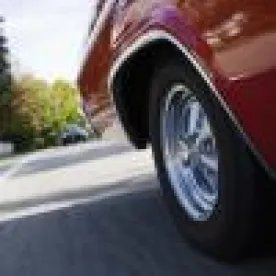Slowly, in the background of our day-to-day lives, cities and their suburban counterparts have been gaining intelligence. Stoplights are timed and monitored by a suite of cameras and sensors; traffic patterns are tracked and analyzed by Watson-like computer systems; GPS-navigation systems communicate to the grid and identify the most efficient route to a destination when taking into account traffic patterns and other transit options; and even parking usage and patterns are analyzed, allowing for rates to be adjusted based on demand. Up to this point, this transition has been independent of cars and trucks, it’s been about improving traffic patterns and attempting to reduce congestion. But cities face transit issues and are looking for connected, autonomous cars to provide the solution.
A monumental shift is upon cities as smart vehicles enter the landscape. These next generation vehicles have the capacity to communicate with each other and the roads they travel down. This has the potential to fundamentally alter how cities operate and consumers move from Point A to Point B.
The traditional, non-connected cars of today largely rely on the driver and a series of on-board sensors to monitor the road and avoid dangers, but these systems fail to improve transit for others around them. Traditional cars allow drivers to move from A to B independent of their fellow drivers and independent of other transit options. Cars were traditionally designed to move the driver (and their passengers) from one location to another, without impacting how other consumers moved, using the driver and these sensors to make that trip as safely as possible. The early versions of these smart systems were limited to backup cameras, blind spot warning for lane departure, and automatic breaking. Unsurprisingly, these smart systems have always been focused on making driving safer for occupants and those around them, but have done very little to improve transit options for the city itself.
Many manufactures and cities have been introducing various Vehicle-to-Infrastructure (V2I) and Vehicle-to-Vehicle (V2V) systems over the last decade as technology allowed both systems to begin to reach mass market adoption. But, a full end-to-end integration of these systems has only gained traction in recent years as cities and manufacturers began to realize the implications for end-to-end integration. In many ways, these two systems have been developed independent of each other and only recently has the merging of these systems been viewed as a revolutionary change in the way transit occurs in cities. Not only does this merging of systems allow the infrastructure to learn from cars currently on the road, but it further allows for integration of the automobile into the “mass-transportation” plan of a city.
V2V systems are in many ways a second generation of crash avoidance currently on the market. These V2V systems allow cars traveling down the road to communicate to each other road conditions and road hazards, and allow cars to understand the traffic patterns and flow in their surrounding environment. Similarly, traditional V2I systems currently reaching the market take much of the data communicated between vehicles and use it to improve traffic flows, reduce congestion, and create a generally safer travel experience. But, the implications of merging these systems and leveraging their data far exceeds just traffic patterns and congestion.
One thing frustrating urban planners and transportation officials developing mass transit plans is the “last mile” issue facing commuters in cities around the globe. While many transit options, excluding cars, do an amazing job of getting commuters to localized transit hubs, transit options often fail at providing a solution of getting people to their final destination with relative ease. This is often because traditional transit options are relegated to fixed routes, via rail-lines, airports, bus routes, and ferry ports. Those options can’t deviate from their fixed routes either because of infrastructure limitations, regulations, or logistical capacity to deviate from their fixed route. To overcome this issue and find that solution, many planners and officials are looking at the integration of V2V and V2I with autonomous vehicles and their existing mass transit plans.
With the rise of Uber and Lyft, and the impending flood of autonomous vehicles hitting the market over the next decade, planners are looking at autonomous vehicles within a ride-sharing network to provide a last mile solution to consumers. These planners see a vehicles ability to intelligently drive through a cityscape, communicating traffic conditions to other cars and transit systems. Then, these systems will evaluate conditions for the most efficient route, communicating this to the “grid” and providing efficient options for consumers getting off a bus, train, or ferry. As a consumer disembarks from their main transit platform, they could hail an autonomous Uber/Lyft waiting in a staging area near transit hubs, walk a few blocks, hop on a CitiBike/MoGo, or even jump on a hyper-local autonomous commuter shuttle such as May Mobility. As autonomous vehicles enter the market and cities see the potential for full integration within transit systems, the way consumers move throughout a city will be forever changed.



 />i
/>i

